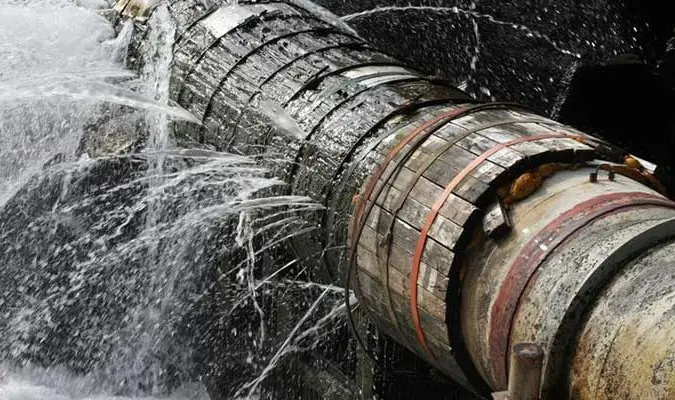The future of sewage
Sewer systems are essential for public health and environmental protection. However, they face several challenges, including aging infrastructure, population growth and climate change.
Therefore, it is essential to explore the future of sewerage and how it will evolve in the coming years. Next, we are going to look at the future of sewerage and where it is headed.
The need for sustainable sewage systems
The challenge of sustainable development requires that cities seek dramatic improvements in the systems that support their vital functions. Sewage systems are no exception.
The future of sewage is to be sustainable, which means that it must mitigate climate change, reducing greenhouse gas emissions and energy consumption, adapt to the impacts of climate change such as increased rainfall and droughts, recover the resources present in wastewater and contribute to the global conservation of nature and ecosystems by emitting fewer pollutants.
The impact of climate change on sewage
The impact of climate change on the sewage system is a growing concern.
Climate change is likely to affect the way we manage wastewater in the future. Going forward, sewage must adapt to changing climate patterns and the need to develop more resilient infrastructure.
Climate change is causing more frequent and intense rainfall, which in many cases exceeds the capacity of sewage systems and causes flooding and sewage overflows.
As sea levels rise, low-lying areas are at risk of flooding, causing damage to sewage infrastructure and leading to sewage overflows.
Climate change also causes drought conditions, which reduce the amount of water available to wash and dilute wastewater in the sewer system.
How to mitigate the impact of climate change on sewage?
To mitigate the impact of climate change on the sewage system, it is necessary to implement measures.
The use of green infrastructure, such as rain gardens and green roofs, helps capture and absorb rainwater, reducing the amount of water entering the sewer system.
Improving sewer infrastructure to increase capacity and improve resilience to extreme weather events helps prevent flooding and sewage overflows.
Water conservation measures, such as low-flow toilets and faucets, reduce the amount of water entering the sewer system, helping prevent overflows during drought conditions.

Innovative solutions for sewer management
One of the most promising solutions for the future of sewage is the development of innovative solutions that can address the global problem of human waste.
The future of sewage must focus on decentralized and nature-based solutions, as well as the importance of viewing wastewater as a resource and not pollutants.
The role of technology in sewer management
Technology will play a crucial role in the future of sewerage. Artificial intelligence and machine learning optimize treatment processes and improve the efficiency of sewage systems, just as SEWDEF SEWDEFdoes.
The future of sewage must focus on the development of new technologies and approaches to wastewater treatment, such as the use of artificial intelligence and machine learning to optimize treatment processes.
AI is used to automate the analysis of CCTV images, reducing the need for manual inspection and speeding up the assessment process. Additionally, AI predicts the likelihood of sewer overflows based on historical data and real-time monitoring, enabling targeted maintenance and infrastructure upgrades to prevent such incidents.
Sensors located in sewer networks detect and alert about possible blockages or overloads before they become major problems. This allows for proactive and timely intervention, reducing the risks of flooding and water pollution. In addition, these systems allow the early detection of contaminants, contributing to the protection of public health.
Advanced hydraulic models enable real-time sampling and analysis of results, as well as trend detection in early warning systems. Technologies such as 5G that allow calculations to be made in real time with latencies of milliseconds are key for the management of critical infrastructures, including remote control.
The use of technical standards provides many advantages in quality management in public drinking water and sewage companies.
SEWDEF and AI in the sewer
Our SEWDEF SEWDEF service is an automatic defect detection system in sewer networks based on artificial intelligence and computer vision. Analyzes sewer network videos for defects and displays information on sewer system conditions and performance.
To learn more about the SEWDEF system:
Challenges ahead
The current state of the wastewater industry is transitional and there are challenges ahead. In Europe, for example, it is necessary to improve the quality of river water and reduce the amount of nutrients and micropollutants in wastewater.
Sewage management faces several challenges that must be addressed to ensure efficient and sustainable wastewater treatment. These challenges include energy use, staffing issues, sludge production, aging infrastructure, and effluent limits.
Addressing these challenges before they become a real problem is key to continued success in the community.
Conclusion
The technology improves the efficiency and quality of sewer management, which in turn prevents diseases, reduces costs and protects the environment.
The future of sewage is likely to involve technological improvements to convert wastewater into drinking water, clean water reclamation systems, and resource recovery technologies.
However, there are also challenges ahead that will need to be addressed.
We hope this article has been useful to you. If you have an engineering project in hand and you think we can help you, here is the link where you can contact us and explain more about it.

